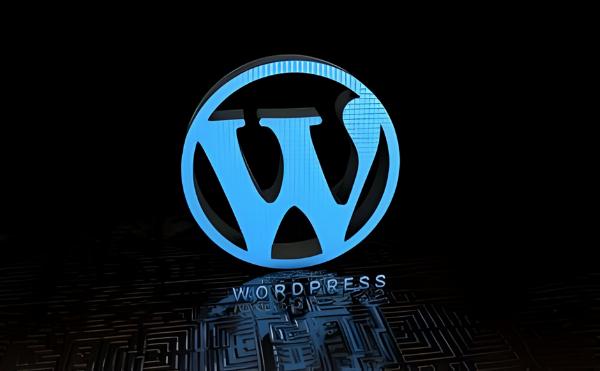 Smart Link Building – DA 50+ Backlinks with Fast Indexing!
Smart Link Building – DA 50+ Backlinks with Fast Indexing!
Node.js and WordPress: Building Dynamic APIs for Custom Applications
Written by Ann » Updated on: June 17th, 2025 361 views

Node.js and WordPress are probably two programming languages that you are familiar with as a web developer. The most popular content management system (CMS) is WordPress, and Node.js is a sophisticated runtime environment that allows JavaScript to be executed outside of the browser. In comparison to WordPress, which is a content management system (CMS) powered by PHP, Node.js, which has JavaScript as its foundation, may appear to be completely different.
They are, nevertheless, able to collaborate with one another because of the WordPress REST API. Node.js applications are able to interact with WordPress by means of HTTP requests thanks to this application programming interface (API). Users, comments, pages, posts, and other parts of the website are among the data that can be accessed with this feature.
The Power of WordPress-
The Content Management System (CMS) known as WordPress is not only well-known but also frequently utilized. It has been increasingly popular as a result of its user-friendly interface and rich capabilities that include the ability to make material interactive and entertaining. It is possible to interface it with any platform in order to increase its features significantly.
The content management system WordPress is used to create more than 470 million websites now. In order to construct websites that are both dynamically scalable and professional, WordPress is an excellent choice because it offers seventy thousand plugins, twelve thousand free themes, and an infinite number of commercial themes. If we switch the administration of WordPress from PHP to Node.js, you might be asking how this will really work out in practice.
When Node.js and WordPress are combined, what are the advantages of doing so?
Imagine you have a WordPress website and you want to create a dashboard that is unique to your site. Through the usage of this dashboard, real-time data from your website, such as the number of recent posts, comments, and user activity, could be displayed.
In this context, Node.js is a very important module. This post will lead you through the process of setting up endpoints for Node.js. These endpoints make use of the WordPress REST API to perform a variety of functions, including the modification of comments, the modification of articles, the customization of the site, and the tailoring of WordPress site administration.
Features of Node.js-
• Node.js is built on an event-driven architecture, which means that it uses callbacks to manage asynchronous actions. With this method, developers are able to create code in a more natural and intuitive manner, which makes it simpler for them to manage complicated workflows and requests that are being made simultaneously.
• As a result of its utilization of non-blocking, asynchronous I/O operations, Node.js is able to manage numerous connections simultaneously without becoming blocked. As a result of its asynchronous nature, Node.js is an excellent choice for developing web applications that are both extremely scalable and very performant.
• The programming language Node.js is cross-platform, which means that it is compatible with a variety of operating systems, including Windows, macOS, and Linux. This makes it possible for developers to write code only once and then distribute it across several environments without having to make any modifications. As a result, this increases productivity and decreases the amount of time needed for development.
• The event-driven architecture that Node.js employs allows for the handling of asynchronous actions through the utilization of callbacks. With this method, developers are able to create code in a more natural and intuitive manner, which makes it simpler for them to manage complicated workflows and requests that are being made simultaneously.
In what ways can Node.js be integrated with WordPress?
There are a number of different approaches that may be taken to successfully integrate Node.js with WordPress, each of which offers its own set of benefits. First, a broad strategy would be:
1. WordPress with Headless Architecture:
You can also use headless architecture with WordPress as a backend content management system (CMS), and a Node.js application that handles frontend rendering and logic. This is another option. One of the most common choices is headless WordPress. Increasing the versatility of the process of generating unique front-end experiences will be accomplished through the use of modern JavaScript frameworks such as React, Vue.js, or Angular.
2. Proxy Server:
Node.js may be utilized to establish a proxy server, which enables the interception of requests that are intended for WordPress and the subsequent processing of such requests in the right manner. This is made possible by the fact that the proxy server can be set up. This will ensure that you have flexibility when it comes to developing custom logic or caching methods thanks to the freedom that this provides. This will allow you to implement them with greater ease.
3. Integrating the Application Programming Interface (API):
If you want to make sure that the Node.js application and the WordPress backend are able to communicate with one another, you can integrate the WordPress REST API. You will have the ability to retrieve and modify data from WordPress within your Node.js application. This data can include posts, pages, users, and other information connected to users.
4. Integration of GraphQL:
In addition, you can use GraphQL to query data from WordPress in a manner that is superior in terms of both efficiency and flexibility. By utilizing libraries such as wp-graphql, it is feasible to expose data from WordPress as a GraphQL application programming interface (API). Using this, you will be able to consume the data that is generated by your Node.js application.
5. Custom Plugins:
The process of developing bespoke WordPress plugins that are capable of being easily connected with your Node.js application is referred to as "custom plugins." By constructing endpoints within your plugin, you have the opportunity to supply specific features or data that your Node.js backend may use. This may be accomplished by providing the plugin with the necessary information.
6. Webhooks:
You may also take into mind WordPress webhooks, which are able to cause events to occur in your Node.js application based on actions that are carried out within WordPress. Consequently, this makes it possible for the two platforms to do data processing or synchronization in real-time. If you want to integrate Node.js with WordPress, you should take into consideration several issues, including performance, scalability, and maintainability.
Integrating Node.js with WordPress can improve efficiency-
1. Choices Available for Implementation
Since quite some time ago, WordPress has been able to support many PHP implementations. This capability has been available to WordPress. In addition to Facebook, which utilizes HHVM to power its massive platform, WordPress is another platform that makes use of this computer programming language. Both continue to function normally and are being actively controlled, respectively.
Microsoft has recently made available a crucial update for Node.js, which will make it possible for the Chakra JavaScript engine to be compatible with the framework. This is a rather recent occurrence. Despite the fact that the patch is very huge, users of Node.js will have access to an alternative application once it has been approved and integrated into the system.
2. The Power of JavaScript
By converting the server code to JavaScript using Node.js, we will be able to provide it access to the powerful V8 JavaScript engine. Through this collaboration, which is supported by contributions from the community as well as contributions from tech giants such as Intel and Google, new possibilities for optimizing server performance with V8 are made available.
3. Pages built with the Node.js framework
If you decide to move to Node.js, the pages will be rendered directly on the client, bypassing the server. This will be the case if you make the switch. It is when it comes to interactive pages, such as the interface of WordPress, that the significance of this transformation becomes obvious. Because there is no longer a need for lengthy server trips over the network, you will notice that the responses to your clicks are substantially quicker. This is because the elimination of this requirement has occurred.
4. V8 power with JIT
The code written in Node.js is currently in the lead, but JavaScript is currently being converted into its native form in a smooth manner, which is allowing its full potential to be realized. Programming languages such as Java and Python, which have traditionally been interpreted, are now able to function with increased speed and efficiency since they execute important code pathways natively.
5. Code that is stored in the cache
If we choose Node.js as our framework of choice, then it is possible for the server and the client to connect with one another by utilizing JavaScript Object Notation (JSON) objects. There is also the possibility that this communication will take place. The performance of this arrangement is improved as compared to that of slower networks.
Conclusion-
When you integrate Node.js with your WordPress website, you open the door to the possibility of significantly increased functionality. You have the ability to modify posts, monitor comments, assign user responsibilities, and add customization, all of which are dependent on the country of the user. You have the ability to add elements such as sophisticated searching, theme alteration, and post changes in addition to the functionality that we have already discussed.
Note: IndiBlogHub features both user-submitted and editorial content. We do not verify third-party contributions. Read our Disclaimer and Privacy Policyfor details.
Copyright © 2019-2025 IndiBlogHub.com. All rights reserved. Hosted on DigitalOcean for fast, reliable performance.















